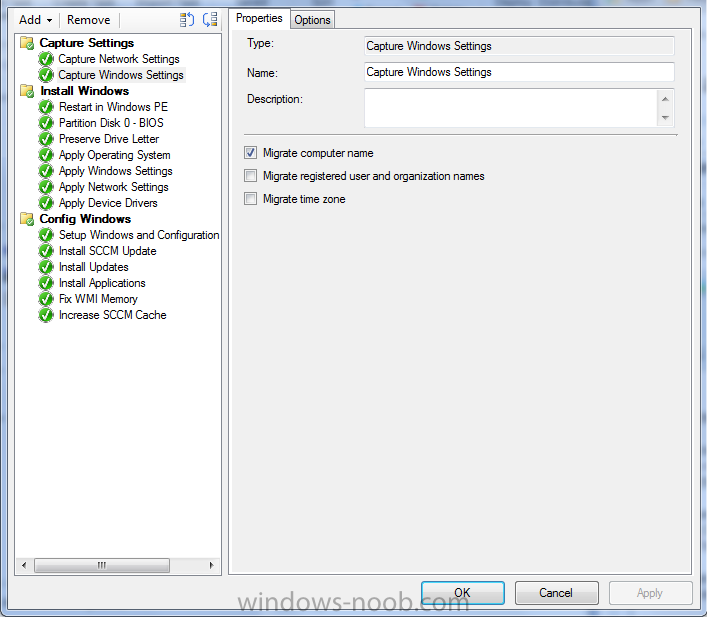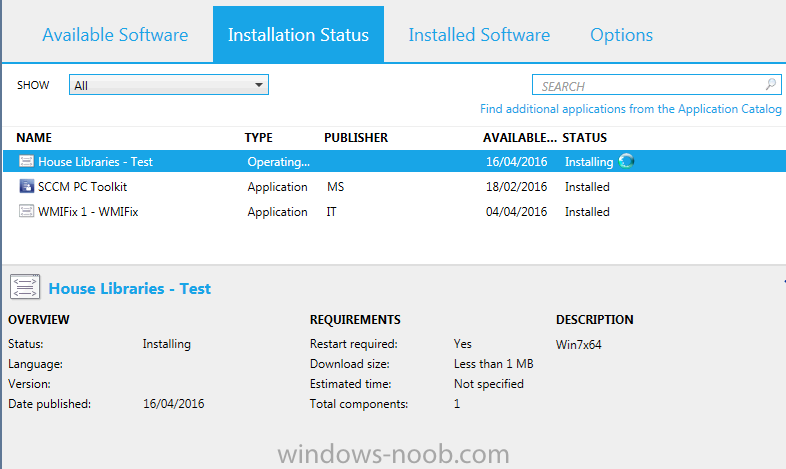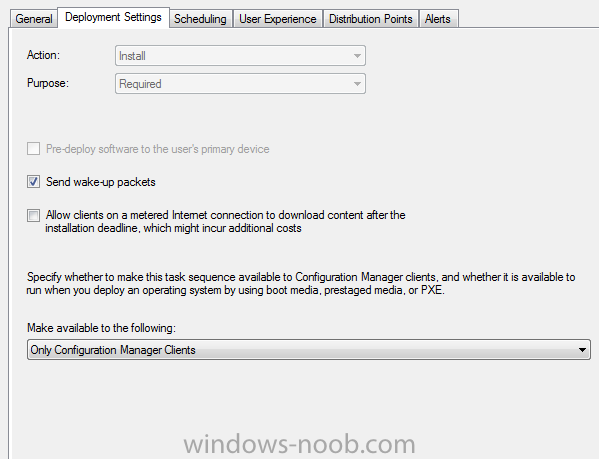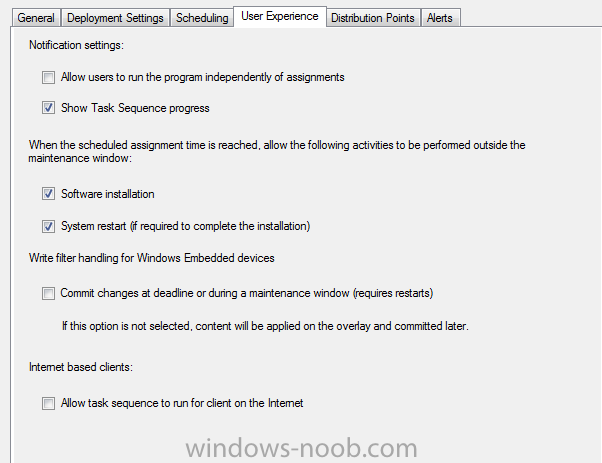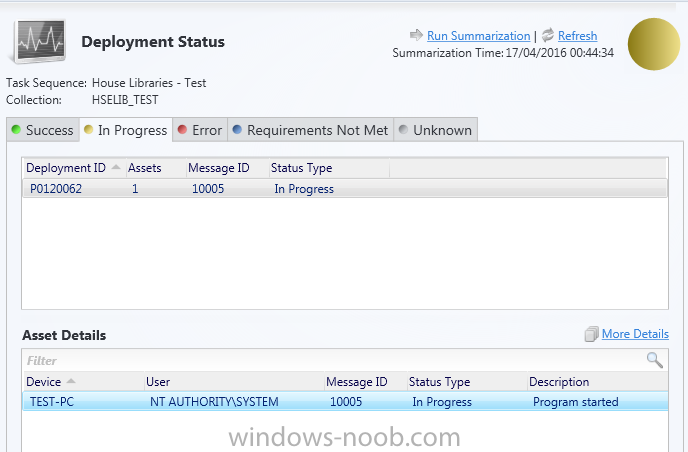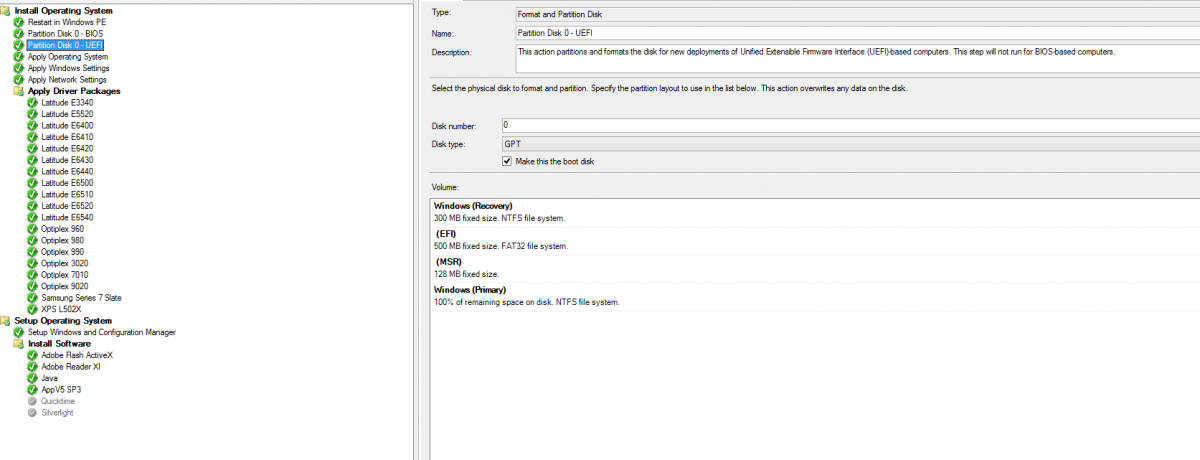Search the Community
Showing results for tags 'Windows 7'.
-
WannaCry was a disaster that could have been prevented if people took notice. If you didn’t hear about it you must have been asleep, here is a refresher. After WannaCry, most businesses took notice and updated their operating systems, patched them and took measures to avoid a further outbreak. But today, May 14th, 2019, Microsoft has released information that warns of yet another WannaCry-like worm. Note: If you are using Windows 10, you are OK, you are not vulnerable to this CVE. If not, and if you are still on Windows 7 then start upgrading to Windows 10 by using the Inplace Upgrade Task Sequence I explain about here or if you cannot upgrade immediately, then patch Windows 7 to protect it from this vulnerability. Vulnerable in-support systems include Windows 7, Windows Server 2008 R2, and Windows Server 2008. Downloads for in-support versions of Windows can be found in the Microsoft Security Update Guide. Customers who use an in-support version of Windows and have automatic updates enabled are automatically protected. Out-of-support systems include Windows 2003 and Windows XP. If you are on an out-of-support version, the best way to address this vulnerability is to upgrade to the latest version of Windows. Even so, we are making fixes available for these out-of-support versions of Windows in KB4500705. If however you are running Windows XP, yes…. that old unsupported operating system then take warning ! Today, Microsoft has warned against the wormable capabilities from this CVE (critical Remote Code Execution vulnerability) and they blogged about what to do to avoid it happening to you. Read that blog post here: https://blogs.technet.microsoft.com/msrc/2019/05/14/prevent-a-worm-by-updating-remote-desktop-services-cve-2019-0708/ It’s very clear from their text that this is all about protecting customers from the next worm, so pay attention and if you have old operating systems that are in support and affected, then update immediately. Note: This is so serious that even Windows XP and Windows Server 2003 are getting updates from Microsoft for this vulnerability. You can download those updates from Microsoft Catalog here. https://support.microsoft.com/en-ca/help/4500705/customer-guidance-for-cve-2019-0708
-
- server 2003
- ransomware
-
(and 5 more)
Tagged with:
-
Hi! Yesterday I tried to create a distribution point on a Windows 7 Enterprise SP1 x86 machine because on SCCM 2007 we have about 110 small locations with a BDP. So we need this feature in 2012, too. I clicked through the wizard to add a new site system but on the Windows 7 machine nothing happens. The client is already installed and everything else works fine. I configured the site server and network access account as domain admin. The client push installation also works fine. What's wrong? On the Technet Library for SCCM 2012 I could'nt find any solution. Did anyone (or anyweb :-) tried this and got this working? Has the DP machine to have a x64 architecture? Thanks for help.
- 50 replies
-
- Site Systems
- Windows 7
-
(and 2 more)
Tagged with:
-
Hi all, So we are in the process of switching to Configuration Manager 2012 and we are now having MANY instances of WMI corruption on user workstations. The OS we are deploying is Win 7 SP1. Symptoms: -Keeping users from logging in (heavily delayed or not at all), spinning at the blue login screen. -Computer hangs at logoff/shutdown. -NIC lags on recognizing internet connection at startup. -Programs running slow and crashing (Includes MS Office and IE). -Windows crashing and getting black screens. Fixes we've tried: -Deleting all expired updates from Configuration Manager. -Consolidating software update groups. When originally installed, someone configured it so every update would create it's own update group. After fixing this, we saw a decrease in affected machines. -Reseting the repositroy. This is pretty much putting a band-aid on the problem. It get's users to be able to get functional again while we continue to troubleshoot the underlying problem. We've tried salavaging the repository, but it hardly if ever completes successfully. -Applying the following hotfixes from Microsoft, after the repository has been reset. This method is only on about 1% of the machines on our network and is still in testing phase. 2705357 The WMI process stops sending events to WMI clients from a Windows 7-based or Windows Server 2008 R2-based server 2692929 "0x80041001" error when the Win32_Environment WMI class is queried by multiple requestors in Windows 7 or in Windows Server 2008 R2 2617858 Unexpectedly slow startup or logon process in Windows Server 2008 R2 or in Windows 7 2465990 "0x80041002 (WBEM_E_NOT_FOUND)" error occurs when you try to open a WMI namespace on a computer that is running Windows 7 or Windows Server 2008 R2 2492536 Msinfo32.exe takes a long time to display or export system information on a computer that has many MSI-X-supported devices and that is running Windows 7 or Windows Server 2008 R2 2578159-When you log on to a computer that is running Windows Server 2008 R2 or Windows 7, the logon process stops responding and a blue swirl is shown on the Welcome screen indefinitely. After some time, the computer stops responding to any network-related commands. You must forcibly restart the computer to recover from this issue. This issue occurs because of a race condition between the Windows Event Log service and the Event Tracing for Windows (ETW) tracing functions. When the race condition occurs, it causes a deadlock situation. This deadlock situation then causes the Winlogon.exe process to become unresponsive. 2639505- Assume that you run a service which queries the Win32_StartupCommand Windows Management Instrumentation (WMI) class on a computer that is running Windows Vista, Windows Server 2008, Windows 7, or Windows Server 2008 R2. In this situation, all loaded user profiles occasionally cannot be unloaded successfully after the WMI query is finished. If the number of unloaded user profiles keeps increasing, the system resources may be exhausted. For example, the virtual address control block (VACB) may be exhausted. 2639077-Handle leak in Svchost.exe when a WMI query is triggered by using the Win32_PowerSettingCapabilities class in Windows 7 or in Windows Server 2008 R2 2547244-The WMI service and the WMI providers stop responding when you use WMI performance classes to monitor performance on a computer that is running Windows 7 or Windows Server 2008 R2 Thanks in advance for any help!
- 6 replies
-
- Configuration Manager 2012
- SCCM 2012
- (and 8 more)
-
Dear Experts, I would like to get an advice from you Please. You may see multiple forums from me – As my Environment is bit complicated. Environment implemented by 3rd party and handover to us as part of transformation – Which we are struggling to upgrade or proceed further. Current Infrastructure: SCCM 2012 SP2 with Windows 7 Clients (Managing – Application, Patch, Operating System Deployment) This is running on Windows Server 2008 with SQL 2008 Required Infrastructure: It is required to Manage Windows 10 Clients, Windows 7 Operating System (Application, Patch, OS Deployment) After being and hearing more responses from our Engineer’s/Experts. It is planned to progress the Green Field Implementation 1. Windows Server 2016 2. SQL Server 2014 or SQL Server 2016 3. Windows 10 ADK with Version ADK 1709 - 10.1.16299 4. System Center Configuration Manager V1710 New Implementation along with Distribution Point 5. Making the Environment with Complete Readiness for all Application Source, OSD Task Sequences, Software Updates., etc., This New Infra will be completely ready with supporting all contents. IP Assignment: We are already having the Boundary Groups, which is based on the IP Range with Region wise in the OLD Environment. New Environment – Client Movement from Old Infrastructure: Let us consider we have the IP Range called 192.168.1.1 to 192.168.1.254 is active and supplying the service with Windows 7 Client OS on Old Infrastructure (SCCM 2012 SP2) Now, the New Infrastructure is ready with all sources (SCCM CB V1710) – If the Client IP Range, Boundary Settings for Site assignment is getting moved from Old Infra to New Infra By Using Automatic Site Client Push Installation 1. SCCM Agent Will get install/upgrade with Version CBV1710 2. Since the IP Range, Boundary Group is allocated with New Environment All the Deployments will get started to run on new Environment. By performing this activity 1. All Windows 7 Clients will be running with SCCM CBV1710 Agent Version 2. All Windows 7 Clients will be reporting to SCCM CBV1710 Infrastructure 3. Slowly, I can prepare myself for Windows 10 Upgrade Projects. Hence, it is require to have 2 Environments in the Same System Management Container (SCCM 2012 SP2, and SCCM CB V1710). If I hold the 2 Environment with Different Site code and host name, Will that be Okay.. Please Advice!! My Sincere apologize to have separate post. Earlier was discussed for the Migration (With in the same server)., but now we preferred to install the SCCM CB V1710 Infra with new server *Windows 2016 & SQL 2016 * and move all the Clients to the new Infrastructure.
-
- system management container
- sccm cb
- (and 7 more)
-
Cannot Image to SSD
No Image Found posted a question in Deploying Windows 10, Windows 8.1, Windows 7 and more...
Hello, My organization is running on Windows 7. Windows 10 is not an option at this time. I can image computers with a traditional HDD. Anytime I try to apply our Windows 7 image to a M2 drive it absolutely fails, will not even attempt to image. Anytime I attempt to image a SSD the imaging process goes through until the computer reboots to finish the installation process. It goes into a reboot loop. The drives are fine because I am able to image Windows 10 to HDD, SSD, and M2. I found turning RAID off and turning AHCI on in the BIOS and allowing for legacy boot worked in the past to allow me to image SSDs. However, I have a Dell Precision M 4700 that I installed a SSD in and Windows 7 will not image even with the BIOS settings I've used in the past. I just installed Windows 7 to this SSD with a DVD and it worked fine. Any idea as to what I'm missing? -
Hi, Simple question really. Whats the best practice when structuring windows client updates? Do people auto apply to test machines and then auto apply to all machines a couple of weeks after.
-
- sccm 2012 r2
- updates
-
(and 2 more)
Tagged with:
-
Hi I followed the following walkthrough(http://www.vkernel.ro/blog/creating-an-offline-mdt-deployment-media) and was able to boot into litetouch on the vm I am trying to sysprep and capture. However when I get to language selection the section is blank and I cannot choose a language, halting me from continuing. This is my first tome using MDT. Any tips?
-
- sysprep
- lite touch
- (and 7 more)
-
Hello folks, In my office environment, we have 30,000 machines. we pushed sccm client to the machines. 4,321 machine failed to installed and rest of them are successfully installed. Can you guys share your thoughts on that issue.? Thank you for your time in advance
-
Is it safe to import drivers into SCCM during production hours? We're getting new models in this week and I've always imported drivers on the weekend after business hours for fear of corrupting current production task sequences. Am I correct in importing and creating driver packages only after business hours?
-
Hey Everyone! Was just curious to know methods of updating an existing WIM? Currently the WIM has IE 8 however there is a request to update to IE 11, not sure if this can be done using DISM offline or is it best practice to build and capture again? Cheers, GHaM
-
The writing of the Bitlocker key to AD has been working flawlessly... until we started to receiving machines with SSD drives in them. The task sequence works flawlessly with no errors. The problem is the bitocker recovery tab within AD is empty. I can run the manual way (https://blogs.technet.microsoft.com/askcore/2010/04/06/how-to-backup-recovery-information-in-ad-after-bitlocker-is-turned-on-in-windows-7/ ) and it will input the data in to ad, but I do not want to have to do this . The real strange thing is if I remove the machine from AD, and reimage it, the key properly registers itself within AD. Only on the second pass will it work?
-
Hello all! I've been trying to deploy Windows 7 64-bit to our new HP EliteDesk 800 65W G2 Desktop Mini PC. All goes OK up to apply operating system step (error occurs at the end of apply OS step). After downloading and applying OS.wim to C-drive, i get following errors to smsts.log: _________________________________________________________________________ Failed to save environment to (80070057) TSManager 28.1.2016 12:08:23 1348 (0x0544) Failed to save the current environment block. This is usually caused by a problem with the program. Please check the Microsoft Knowledge Base to determine if this is a known issue or contact Microsoft Support Services for further assistance. The parameter is incorrect. (Error: 80070057; Source: Windows) TSManager 28.1.2016 12:08:23 1348 (0x0544) Failed to persist execution state. Error 0x(80070057) TSManager 28.1.2016 12:08:23 1348 (0x0544) Failed to save execution state and environment to local hard disk TSManager 28.1.2016 12:08:23 1348 (0x0544) _________________________________________________________________________ After these errors there are other inputs in log, but I believe OSD failing is about these errors. When I try and start computer (in which OSD has failed) I get error: "An operating system wasn't found. Try disconnecting any drives that don't contain an operating system. Press Ctrl+Alt+Del to restart" Any ideas why I'm getting these errors and how can I fix them? Thanks!
- 7 replies
-
- sccm 2012 r2
- osd
-
(and 3 more)
Tagged with:
-
Hi all, I would like to know if anyone has come across the following behavior with SCCM 2012 R2 SP1 and Windows 7 please? We deploy app-v applications to user based collections using SCCM which is all fine until the user profile (which is stored locally on the thick device) is deleted either by Group Policy or an engineer. When the profile is deleted, the next time that user logs in, the applications never get re-installed. I have tried doing an Application deployment evaluation cycle lots of times but this doesnt work. I can see the appdiscovery.log reports that the application "is not installed" but nothing else happens, nothing happens in the appenforce.log for example. When i go into software center it shows under the Installed Software tab that those applications have been installed and the install date refers back to before the profile was deleted! When this has happened to a user i have asked them to log out, i log in as admin and then delete the profile (again) by using Advanced System Settings, reboot the device but same thing happens. I have tried to carry out a repair to the CCM client on that device but problem persists. I'm at a complete loss, any help very much appreciated.
-
- userprofiles
- SCCM2012
- (and 4 more)
-
Task Sequence failing to apply operating system
WPilcher posted a question in Deploying Operating Systems
Hi all, I'm in the midst of learning the OSD process that's handled by SCCM. My task sequence is using the default steps in order to minimise confusion / issues. The problem I'm facing is that during the disk partitioning steps, the C: partition isn't being set as active, so when the TS steps through to deploying the OS, it cannot find an area to put it. The key areas of the log are pasted below, but I've attached the entire log just in case. Any guidance would be thoroughly appreciated. Thanks in advance. ==============================[ OSDDiskPart.exe ]============================== OSDDiskPart 02/06/2016 10:56:24 1176 (0x0498) Command line: "osddiskpart.exe" OSDDiskPart 02/06/2016 10:56:24 1176 (0x0498) Succeeded loading resource DLL 'X:\sms\bin\x64\1033\TSRES.DLL' OSDDiskPart 02/06/2016 10:56:24 1176 (0x0498) Reading partition size info for partition 0 OSDDiskPart 02/06/2016 10:56:24 1176 (0x0498) Remaining size before partition: 256052966400 OSDDiskPart 02/06/2016 10:56:24 1176 (0x0498) size units: SIZE_MB OSDDiskPart 02/06/2016 10:56:24 1176 (0x0498) Set partition size: 367001600 OSDDiskPart 02/06/2016 10:56:24 1176 (0x0498) Remaining size after partition 0: 255685964800 OSDDiskPart 02/06/2016 10:56:24 1176 (0x0498) Set an environment variable for partitions 0-1 without drive letter OSDDiskPart 02/06/2016 10:56:24 1176 (0x0498) Reading partition size info for partition 1 OSDDiskPart 02/06/2016 10:56:24 1176 (0x0498) Remaining size before partition: 255685964800 OSDDiskPart 02/06/2016 10:56:24 1176 (0x0498) size units: SIZE_PERCENT OSDDiskPart 02/06/2016 10:56:24 1176 (0x0498) 100% size specified. OSDDiskPart 02/06/2016 10:56:24 1176 (0x0498) Remaining size after partition 1: 0 OSDDiskPart 02/06/2016 10:56:24 1176 (0x0498) Set an environment variable for partitions 0-2 with drive letter OSDDiskPart 02/06/2016 10:56:24 1176 (0x0498) Checking volume 'C:' for BitLocker OSDDiskPart 02/06/2016 10:56:24 1176 (0x0498) Volume 'C:' is on disk '0l' OSDDiskPart 02/06/2016 10:56:24 1176 (0x0498) Volume 'C:' is fully decrypted OSDDiskPart 02/06/2016 10:56:24 1176 (0x0498) Checking volume 'D:' for BitLocker OSDDiskPart 02/06/2016 10:56:24 1176 (0x0498) Volume 'D:' is on disk '0l' OSDDiskPart 02/06/2016 10:56:24 1176 (0x0498) Volume 'D:' is fully decrypted OSDDiskPart 02/06/2016 10:56:24 1176 (0x0498) Checking volume 'X:' for BitLocker OSDDiskPart 02/06/2016 10:56:24 1176 (0x0498) S:\ ffffffff OSDDiskPart 02/06/2016 10:56:24 1176 (0x0498) R:\ ffffffff OSDDiskPart 02/06/2016 10:56:24 1176 (0x0498) Q:\ ffffffff OSDDiskPart 02/06/2016 10:56:24 1176 (0x0498) P:\ ffffffff OSDDiskPart 02/06/2016 10:56:24 1176 (0x0498) O:\ ffffffff OSDDiskPart 02/06/2016 10:56:24 1176 (0x0498) N:\ ffffffff OSDDiskPart 02/06/2016 10:56:24 1176 (0x0498) Diskpart: select disk 0 clean create partition Primary size=350 assign letter=S format quick fs=ntfs label="System Reserved" active create partition Primary assign rescan OSDDiskPart 02/06/2016 10:56:24 1176 (0x0498) Executing diskpart script: select disk 0 clean create partition Primary size=350 assign letter=S format quick fs=ntfs label="System Reserved" active create partition Primary assign rescan OSDDiskPart 02/06/2016 10:56:24 1176 (0x0498) Command line for extension .exe is "%1" %* OSDDiskPart 02/06/2016 10:56:24 1176 (0x0498) Set command line: "X:\WINDOWS\system32\diskpart.exe" /s "X:\WINDOWS\TEMP\DiskPartScript.txt" OSDDiskPart 02/06/2016 10:56:24 1176 (0x0498) Executing command line: "X:\WINDOWS\system32\diskpart.exe" /s "X:\WINDOWS\TEMP\DiskPartScript.txt" OSDDiskPart 02/06/2016 10:56:24 1176 (0x0498) Process completed with exit code 0 OSDDiskPart 02/06/2016 10:56:30 1176 (0x0498) Formatting partitions OSDDiskPart 02/06/2016 10:56:30 1176 (0x0498) Partition: 1 Primary OSDDiskPart 02/06/2016 10:56:30 1176 (0x0498) Partition: 2 Primary OSDDiskPart 02/06/2016 10:56:30 1176 (0x0498) Adding logical drive: C: OSDDiskPart 02/06/2016 10:56:30 1176 (0x0498) Adding logical drive: S: OSDDiskPart 02/06/2016 10:56:30 1176 (0x0498) Skipping non-local logical drive: X: OSDDiskPart 02/06/2016 10:56:30 1176 (0x0498) Formatting drive C: with NTFS filesystem, method quick OSDDiskPart 02/06/2016 10:56:30 1176 (0x0498) Start executing the command line: OSDApplyOS.exe /image:PPD00099,%OSDImageIndex% /runfromnet:False TSManager 02/06/2016 10:56:36 1100 (0x044C) !--------------------------------------------------------------------------------------------! TSManager 02/06/2016 10:56:36 1100 (0x044C) Expand a string: WinPE TSManager 02/06/2016 10:56:36 1100 (0x044C) Executing command line: OSDApplyOS.exe /image:PPD00099,%OSDImageIndex% /runfromnet:False TSManager 02/06/2016 10:56:36 1100 (0x044C) Command line for extension .exe is "%1" %* ApplyOperatingSystem 02/06/2016 10:56:37 1484 (0x05CC) Set command line: "OSDApplyOS.exe" /image:PPD00099,1 /runfromnet:False ApplyOperatingSystem 02/06/2016 10:56:37 1484 (0x05CC) Found run from net option: 0 ApplyOperatingSystem 02/06/2016 10:56:37 1484 (0x05CC) Not a data image ApplyOperatingSystem 02/06/2016 10:56:37 1484 (0x05CC) ApplyOSRetry: ApplyOperatingSystem 02/06/2016 10:56:37 1484 (0x05CC) TSLaunchMode: PXE ApplyOperatingSystem 02/06/2016 10:56:37 1484 (0x05CC) OSDUseAlreadyDeployedImage: FALSE ApplyOperatingSystem 02/06/2016 10:56:37 1484 (0x05CC) 'C:\' not a removable drive ApplyOperatingSystem 02/06/2016 10:56:37 1484 (0x05CC) Searching for next available volume: ApplyOperatingSystem 02/06/2016 10:56:37 1484 (0x05CC) Volume S:\ size is 350MB and less than 750MB ApplyOperatingSystem 02/06/2016 10:56:37 1484 (0x05CC) Volume C:\ is a valid target. ApplyOperatingSystem 02/06/2016 10:56:37 1484 (0x05CC) Found volume C:\ ApplyOperatingSystem 02/06/2016 10:56:37 1484 (0x05CC) Windows target partition is 0-2, driver letter is C:\ ApplyOperatingSystem 02/06/2016 10:56:37 1484 (0x05CC) !sSystemPart.empty(), HRESULT=80004005 (e:\nts_sccm_release\sms\framework\tscore\diskvolume.cpp,130) ApplyOperatingSystem 02/06/2016 10:56:37 1484 (0x05CC) System partition not set ApplyOperatingSystem 02/06/2016 10:56:37 1484 (0x05CC) Unable to locate a bootable volume. Attempting to make C:\ bootable. ApplyOperatingSystem 02/06/2016 10:56:37 1484 (0x05CC) bBootDiskDefined == true, HRESULT=80004005 (e:\nts_sccm_release\sms\client\osdeployment\applyos\installcommon.cpp,690) ApplyOperatingSystem 02/06/2016 10:56:37 1484 (0x05CC) Unable to find the system disk ApplyOperatingSystem 02/06/2016 10:56:37 1484 (0x05CC) MakeVolumeBootable( pszVolume ), HRESULT=80004005 (e:\nts_sccm_release\sms\client\osdeployment\applyos\installcommon.cpp,772) ApplyOperatingSystem 02/06/2016 10:56:37 1484 (0x05CC) Failed to make volume C:\ bootable. Please ensure that you have set an active partition on the boot disk before installing the operating system. Unspecified error (Error: 80004005; Source: Windows) ApplyOperatingSystem 02/06/2016 10:56:37 1484 (0x05CC) ConfigureBootVolume(targetVolume), HRESULT=80004005 (e:\nts_sccm_release\sms\client\osdeployment\applyos\applyos.cpp,499) ApplyOperatingSystem 02/06/2016 10:56:37 1484 (0x05CC) Process completed with exit code 2147500037 TSManager 02/06/2016 10:56:37 1100 (0x044C) !--------------------------------------------------------------------------------------------! TSManager 02/06/2016 10:56:37 1100 (0x044C) Failed to run the action: Apply Operating System. Unspecified error (Error: 80004005; Source: Windows) TSManager 02/06/2016 10:56:37 1100 (0x044C) smsts7.log -
So I have and unattend usb flash drive that works perfectly when installing Win7 IE8. I just updated my resource image to include IE 11 and now I get this: I have read several times over that IE 10 and IE 11 do something weird to your unattended. But I need to know what to do here with my unattended to get this thing fixed. So I have seen several ads to just commit out IE but thats dont going to work. Please help me resolve this issue. I am days behind because of this.
-
- Windows 7
- internet Explorer
-
(and 2 more)
Tagged with:
-
I want to install Windows 7 Enterprise on a machine using SCCM 2012 OSD. The machine already has Windows 7 professional installed on it. The machine has 2 drives C: and D: created on a single HDD. I want to retain the user data on Drive D as it is. The size of data on D drive is huge, and I don't want to waste time backing it up and restoring the same on the same machine. I want to retain 2 drive structure. I don't want backup data on a USB (using Easy transfer or similar tool), not do I want to use USMT to copy D drive data on to a server share location. Any suggestions on how to go about it?
-
Hi All Credit to the author of this site, its fantastic knowledge. 1up! I have recently been tasked to re-image 45 PCs across several sites in the next 24 hours. I was hoping to run a unattended OSD (SCCM 2012 CU3) which would capture the PCName / Domain settings and apply our new (fat) image (55GB). Now I have captured the image that I want and I have created an OSD for my choosen collection. The OSD Deploys to the collection but I find that OSD is stuck at "Installing" status for the past couple of hours with a reboot in sight. I have used CMTrace on the old PC and Server but none of error relate to the time its was launch. The only error I had was network access account which has now been fixed. Please could someone offer some advice on what I should be looking for? Thank you ixpnet I have attached a couple of photo of my setup. Happy to upload logs if needed.
-
I want to know if anyone has a script or tutorial on creating a script to "enable enterprise mode" and to allow enterprise mode to use a "website list" to manage certain sites. I know this should be fairly simple to do but I am new to scripting so I felt after several hours of looking and obviously creating the wrong searches, it time to ask the pros. Would prefer vbscript, but will not refuse powershell.
-
- Windows 7
- Windows 8.1
-
(and 6 more)
Tagged with:
-
Hi forum, I've added this command into my task sequence but unfortunately I still have to log in after the build has completed and click on Activate. I don't need to enter a licence key as that's in the T/S. When I run this command from a Run command it says it needs elevated privileges to run. Any idea how incorporate this into the command? cscript.exe %windir%\system32\slmgr.vbs /ato Thanks
- 6 replies
-
- windows 7
- activation
-
(and 2 more)
Tagged with:
-
We just finished upgrading our SCCM Servers both our CAS and PS1 to SCCM 2012 R2 SP1. After the upgrade it seems that the new boot.wim file that is created is having issues. After the machine pxe boots and pulls down the wim file, it goes to windows is starting up then preparing network connections and then black screens and restarts. I opened up an F8 command prompt and pulled the SMSTS.log and I see an error during the TSMBootStrap.exe step. The error is Failed to download pxe variable file ... PxeGetPxeData failed with .... I have attached our SMSTS.LOG file. I verified that i have network connectivity by running IP config and then I was also able to ping our MP. I thought it might be driver related but I have tested from different dell models, Dell 9020, E3340, 7010, etc. and they all have the same problem. Any ideas/suggestions? smsts.log
- 3 replies
-
- SCCM 2012 R2 SP1
- PXE boot
-
(and 3 more)
Tagged with:
-
Hello, Our School District is wanting to move to UEFI/Windows 7 environment. We are having problems laying down a Windows 7 x64 image using UEFI pxe boot. I think it has to do with the way we are partitioning the disk but I am not sure what I need to change. I have attached a copy of our smsts.log file and screenshots of our task sequence. We are not using MDT task sequence. We are using a SCCM task sequence. Please any help would be much appreciated. Thanks, Joe smsts.log
-
Hi, I've taken over a Task Sequence that was built by another person, and I am having issues with ALL machines being built by the TS finishing with the name "MINWINPC". Yes, I am kicking the built off using a USB stick (I've read posts that mention this being the case), but correct me if I am wrong, this appears to be if you use USB and deploy to Unknown Computers? So what I am inheriting is an MDT integrated TS in SCCM 2012 R2, which is deployed to a Device Collection as a Required deployment - so I can see if it is correctly resolving the machine MAC address to the device in SCCM 2012 R2 (otherwise it just doesn't build). I've even attempted to chuck in the TS this script - https://t3chn1ck.wordpress.com/2009/04/24/script-to-prompt-for-system-name-in-sccm-osd/ - to allow for prompting for a new name if MINWINPC is seen, but it quickly skips this step, and I can't see errors in the log. The interesting thing about this TS is that there are multiple PowerShell tasks that are used to download the WIM off the USB (it's been copied to the bootable USB's to save dragging it over the network) and applied using a DISM command in a PowerShell script (i.e. it's a bit different to just selecting the O/S you want to deploy and having it happen). But apart from that, nothing else seems to "out there" in terms of thinking, but I just can't figure out why the object in SCCM gets renamed to MINWINPC, the machine has that name and joins the Domain as that. Now, I can just go through the renaming process after, but that doesn't help if I ever want to build multiple machines at once. Got any ideas of where to look or how to overcome a MINWINPC issue? Thanks MG
- 2 replies
-
- Task Sequence
- Windows 7
- (and 4 more)
-
Hi, Not sure if this should go in this section, but it is a Windows 7 issue with IE11. So, a background. We have IE11(version 11.0.9600) running on Windows 7 64bit and an Enterprise Mode list sitting on our server. We have added a bunch of sites and web app links in here. Initially it seemed that IE11 was not honouring what was on the list, after I took over this issue I could see IE11 is pulling down the list when changed and is in fact honouring what we have on there. The problem is, we have a lot of sites that need to be run in Doc mode 5, but only the first page is actually opening in that mode(it is set to doc mode 5 on the list), any further sub pages are changing to Default-Edge as soon as they are opened. I confirmed this by pressing F12 while on the sites and can see the doc mode change from 5 to Edge when I click out of the main page. Can you add sites into enterprise mode list and have sub pages of that site also honour the document mode selected for the initial page? I have only just started using Enterprise Mode list manager and don't see an option to allow this. I've looked online and can see nothing on this particular issue. Below is a sample of the enterprise mode list(I've changed the sites name for security etc): -<domain> mysiteprojects.whatevergroup.net <path docMode="5">/sites/webapp1/default.aspx</path> <path docMode="5">/sites/webapp2/Brft/default.aspx</path> <path docMode="5">/sites/webappsales/4fu/default.aspx</path> <path docMode="7">/sites/mylearning/Pages/home.aspx</path> So lets look at the webapp1 site. This loads up fine in doc mode 5, but any sub pages change back to default-edge. I know I've gone on a bit, but I really hope someone can make sense of my ramblings and be able to help me out. Thanks,
- 4 replies
-
- enterprise mode list
- IE11
-
(and 1 more)
Tagged with:
-
Hi All, I am quite new to SCCM, but I'm slowing getting to grips with it. I am just wondering if there is way to add a PC to a collection and it then rebuild automatically. So far i have created a collection and deployed a TS to it as required. But i still have to PXE boot the PC for it to rebuild. IS there a way where it will PXE boot itself? For example if i open software store and tell it to re install the OS, it knows to PXE and start up in PE. Thanks, Craig.
-
Hello, I have about 8 labs (Windows 7, ~20-35 machines per each lab) spread across campus. These labs have Deep Freeze on them. We've recently started implementing SCCM 2012. What would be the best practice to update these machines that are frozen across campus? Each lab currently has their own separate scheduled maintenance time with Deep Freeze at some time within the night where it would check for updates from our WSUS server and then install them. We still have this WSUS server, but we now have SCCM 2012 on it also. I'm not sure how having SCCM 2012 on this server will now effect how these machines try to get updates from WSUS. What is the best practice for keeping all of these machines up to date? Do I have to create an ADR for each lab and correspond it to the scheduled maintenance time?
- 1 reply
-
- deep freeze
- frozen
-
(and 4 more)
Tagged with:




